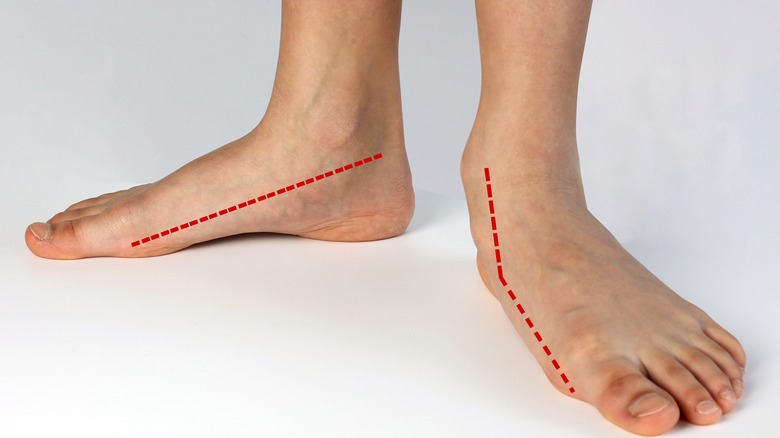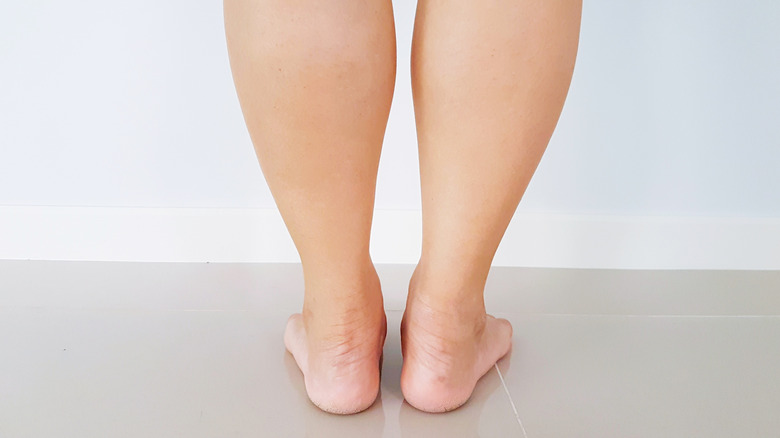How To Tell If You Have Flat Feet
Research from the Institute for Preventive Foot Health reveals that roughly 18 million Americans over the age of 21 are diagnosed with flat feet, or pes planus. The condition is one in which the inside arches of one's feet lie flat against the ground upon standing, rather than leaving a small curvature of space (via Mayo Clinic). In addition, the direction of the foot is often angled outwards. For some people with flat feet, their arches naturally failed to develop during childhood, while for others, the condition may be the result of injury. Most people with flat feet do not experience pain. However, if you find that you are experiencing foot discomfort, here's how to tell if flat feet may be the cause.
While there are different types of flat feet, experts at the Cleveland Clinic explain that the main symptom of the condition is pain localized to the area. This includes leg cramping, pain in the muscles of the foot or leg, pain while walking, or pain in the arches, heel, ankle, or along the outside of the foot.
Take a look at your toes
If you're still unsure as to whether or not you may have flat feet, the American Academy of Orthopaedic Surgeons often implements the "too many toes" test. When viewing the back of a patient's foot while they're standing upright, only their fourth and fifth toes should be seen sticking out in cases of proper foot alignment. However, if you were to have someone take a picture of the back of your foot and the majority of your toes were visibly sticking out at an angle, it may be a possible indication of flat feet.
If you suspect you may be experiencing pain related to flat feet, be sure to consult with your doctor. A physician will be able to administer a series of tests to get to the root of your foot pain (via Mayo Clinic). Physical therapy, nonprescription arch supports, and stretches that target the Achilles tendon may all help provide pain relief for those with flat feet. In some cases, surgery may be warranted if the pain is interfering with a patient's daily life and has been otherwise unresponsive to milder forms of treatment.


